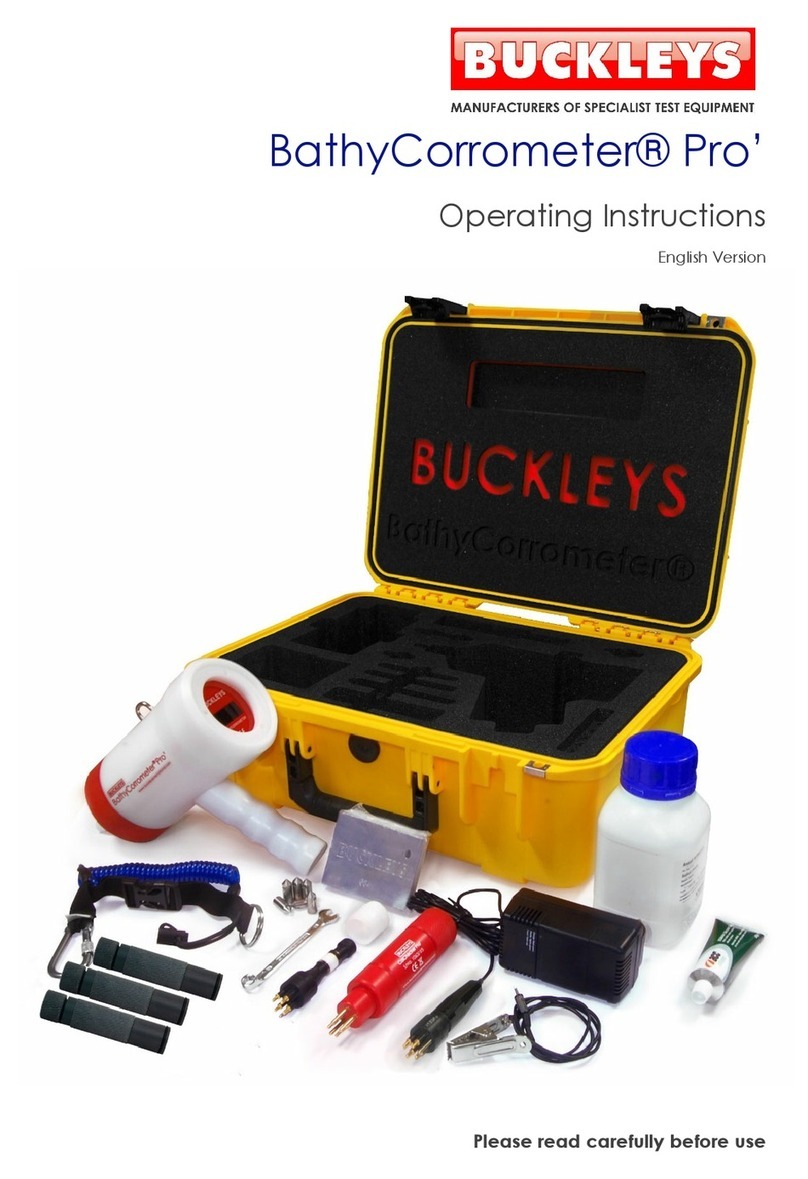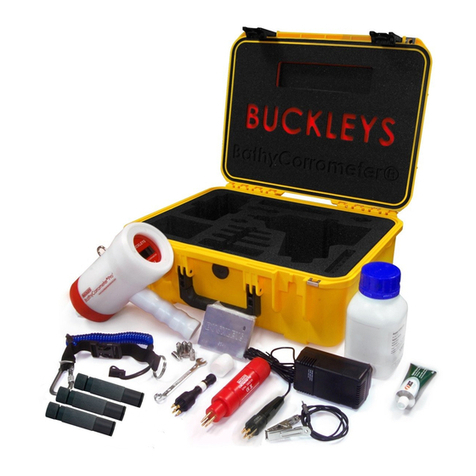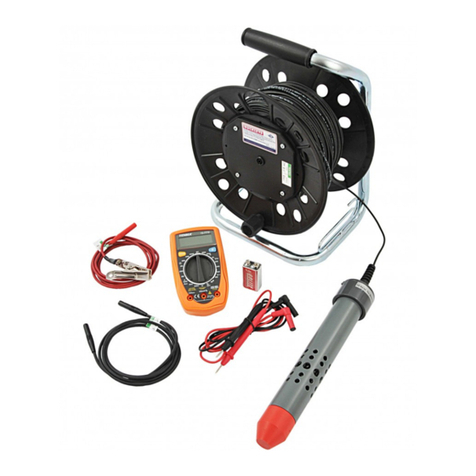
Using Zinc & Magnesium test blocks
Verification of the operation of the BathyCorrometer®Pro’ can be carried out using
Zinc and/or Magnesium test blocks.
Zinc/magnesium test blocks are not a substitute for accurate calibration and are only
to be used as a convenient means of checking the meter.
The potential of the test blocks can vary depending upon surface condition and
method of pretreatment and will be subject to variation. For accurate conformation of
the Ag/AgCl/seawater half-cell electrode only the K-Series reference electrodes
should be used.
Potential measurements taken should be recorded which will indicate if there is any
significant variation in the electrodes. Differences in the order of 0.00 to 0.03V1(0-30
millivolt) or so between readings are quite possible and will mainly be caused by
variations in water salinity and/or changes in water temperature. As a guide, readings
taken in a 3% salinity solution at an ambient temperature of 25°C are as follows:
Zinc (Zn) = 1.00 - 1.08V
Magnesium (Mg) = 1.40 - 1.70V
Tarnished/dirty test blocks will give a lower reading than clean ones. The test blocks
should not be left in the seawater solution after use. Only one test block should be
used at a time.
Commercial grade magnesium anodes are either high-purity 99% magnesium or a
magnesium, zinc, aluminium alloy. Buckleys supply the Mg/Al/Zn alloy material for
testing the BathyCorrometer®Pro’. The aluminium content of the anode would be
between 5.3 to 6.7 wt% and the zinc content typically 2.5 to 3.5%. The open-circuit
potential for the anode in seawater would be typically -1.5V vs Ag/AgCl/seawater.
The magnesium test blocks should not be considered as accurate reference
electrodes as the potential can show significant variations with the potential range
typically varying by +/-100mV.
The readings obtained will also depend on the water temperature, salinity and the
level of surface contamination and corrosion present on the test block’s surface.
The magnesium test block is provided to confirm that the BathyCorrometer®Pro’
can read structure to electrolyte potentials at the upper end of the expected
potential range. The typical reading obtained when using a magnesium test
block should be in the range from -1.40 to -1.70V when used to check silver-silver
chloride half-cells.
For accurate calibration checks on the BathyCorrometer®Pro’ internal
Ag/AgCl/seawater electrode the K Cell calibration electrodes should be used.






























